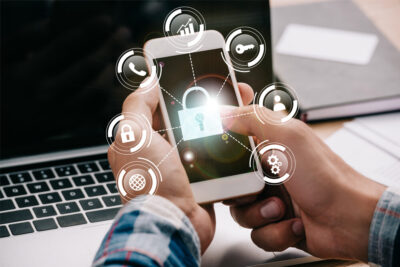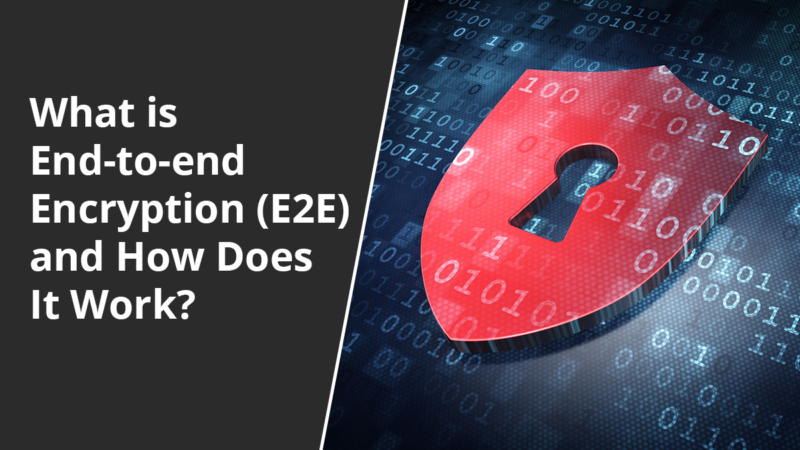From Yahoo! Messenger to AIM Instant Messenger, these communication services have successfully accomplished their responsibilities to become the pillars of the future. The technological future, however, has not only seen advancements in how we interact with the world––but how we also value our privacy.
For starters, your devices have always been rigged with various forms of encryption––functioning 24/7. Take, for example, when you access your bank online, the website is encrypted so that your internet service provider, network operator, or even cybercriminals trying to get into your traffic won’t be swooping in to get your bank passwords and other financial details. This goes for any website that uses HTTPS, which, fortunately, is almost all the websites on the internet right now.
Even your Wi-Fi uses a form of encryption as well! That’s why none of your neighbors can see what you’ve been doing using your network. That is, of course, if you’re using today’s Wi-Fi security standard.
If you’ve been using Apple products like iPhones, iPads, Macbooks, as well as Android phones, Chromebooks, and Linux systems––rest assured that encryption has been working hard to secure your data, both old and new, by storing data in encrypted form. After you’ve signed in with your PIN or password, that’s the time when it becomes decrypted.
The aforementioned services, as what’s been said, have lived fruitful and purposeful lives. The only thing is that your privacy, back then, wasn’t as private as you would’ve hoped it to be. Times have changed, though, and the apps you’ve been using every day like Telegram, WhatsApp, and even Zoom have made it a point to secure you even further by implementing something called end-to-end encryption. But how does “end-to-end encryption” differ from regular encryption?
What is end-to-end encryption?
End-to-encryption is a form of encryption where only the sender and the recipients have access to the information that is shared. Not even the service provider or third-party storage will be able to access the data because they do not have access to the encryption keys.
Now, you’ve probably heard of one of the following terms before:
- End-to-end encryption (E2EE)
- Client-side encryption (CSE)
- Zero-knowledge encryption
Essentially, end-to-end encryption (E2E), client-side encryption (CSE), and zero-knowledge encryption are often used interchangeably and are the same in making data unreadable for anyone but the sender and the recipient.
Undoubtedly, information is power. A conversation between two co-workers about the business may hold heavy value towards an organization. On the other hand, that same bit of shared information may also be the cause for serious risk if what’s being talked about are confidential data, a business strategy, or any sort of negotiation. As a result, these serious dialogues or group conversations require a secure communication platform that can provide strong encryption anytime, anywhere. For this reasoning alone, end-to-end encryption exists.
How does end-to-end encryption work?
 While it may be obvious that, at one end, there’s the sender, and at the other end is the recipient, encryption isn’t entirely just about the people involved. It focuses more on the device level of things.
While it may be obvious that, at one end, there’s the sender, and at the other end is the recipient, encryption isn’t entirely just about the people involved. It focuses more on the device level of things.
With E2E encryption, messages and files are already encrypted before it leaves the phone or computer until it reaches the desired destination. In the end, hackers won’t be able to access the data on the server because they don’t have the private keys to decrypt the sent data in the first place.
Private keys, you ask? Well, what makes end-to-end encryption possible is the existence of public and private keys. This process is called asymmetric cryptography wherein separate cryptographic keys are used to secure and decrypt a message. Public keys are used to lock or encrypt the messages. On the other hand, private keys are used to unlock or decrypt the messages.
For example, let’s say you’re working with a client named Gary and you’re using a service such as TitanFile that uses end-to-end encryption to communicate with him. The service has automatically given both of you a public and private key pair. The public keys, on one hand, are stored on the server, and the private keys, on the other hand, are stored on your devices.
When you have something important to share with Gary, using the service, you send Gary an encrypted message using his public key. When Gary receives the said message, he uses his private key on his device to decrypt the message you’ve sent. If Gary would like to reply, he just follows the same process only this time, he uses your public key instead.
However, not all applications apply end-to-end encryption. One of the most important communication apps to ever be created: Facebook Messenger does not use end-to-end encryption. When you decide to message someone on the platform, the messages are encrypted between you, Facebook, and the person you sent the message to. The message is then stored on Facebook’s servers. Now, that’s the problem––Facebook has a key and, therefore, they can see your messages willingly.
This is what end-to-end encryption works hard to dismantle. With E2E encryption, the platform in the middle––whether it’s Facebook or other providers that don’t use this form of encryption––will no longer be able to see the contents of your messages. It’s as simple as them not having a key that can be used to invade your privacy. As long as you and the person you’re communicating to hold the key, your privacy is safe and secured.
Always remember that your messages, files, and e-mails are ultimately private. The only people who are supposed to see these are those you’ve willingly sent them to. No company, platform, or provider in the middle are supposed to have access to your data, anyway.
Benefits of end-to-end encryption
Though there are plenty of pros in using end-to-end encryption, its main advantage is restricting access to transmitted data for everyone besides the recipient. Imagine sending out a letter in a normal envelope––but delivered in a tank through the deepest part of the Pacific Ocean guarded by whale-shark-alligator hybrids. The letter is nearly impossible to get to. E2E encryption works in that very same way where you’re ensured to send a message in private.
Following this, another benefit it raises is that if no one can see the message, then no one can alter it as well. Cybercriminals have been all over encryption because obviously, whatever piece of information needs encrypting means that the message needs to be delivered to its recipient. These hackers have a couple of modern methods to decrypt, per se, these encrypted data––making the message readable and clear once again. However, what’s there to fear if end-to-end encryption makes it so you can’t even get to the message in the first place?
Look, whale-shark-alligator hybrids may not exist in the real world, but thankfully, E2E encryption does. In a world of technology and countless pieces of information passed on each day, there should be no questions regarding the existence of encryption technology. It exists for the sole purpose of protecting you, your message, and its recipient. Despite many big-time apps using it today, encryption, in its purest form, isn’t flawless yet. Mathematicians and other experts have been working hard to constantly develop new systems of encryption while improving the old ones.
In any case, E2E encryption ensures the honesty of the conversation. Once you’ve received a successfully decrypted message, know that almost 100% of the time––that’s the original and untampered message that was sent to you.
Shifting perspectives outside of pure business and messaging apps, the National Security Agency (NSA) has also issued guidelines for using collaboration services. Unsurprisingly, on top of these guidelines was to implement end-to-end encryption. Just the sole inclusion of end-to-end encryption in this list indicates just how important this type of security is––so much so that even the organization that aims to find out and uphold the highest levels of safety is on board for the program.
Not only that but the U.S. State Department has also been part of the movement and supported the benefits of E2E encryption through their ITAR Carve-out for Encrypted Technical Data. What this means is that defense companies are now able to share unclassified data outside of the United States. Normally, this would require export licenses but because of E2E encryption, this exchange can be properly done without it.
The sheer fact that the NSA and the State Department have both acknowledged end-to-end encryption is big for the security system––backing the idea that having it is a renowned advantage and superior among traditional and older forms of security and encryption.
What is TitanFile?
TitanFile is an easy-to-use secure file sharing solution that enables professionals to exchange confidential information with clients and colleagues with peace of mind. TitanFile enables end-to-end encryption via Hitachi Credeon.
